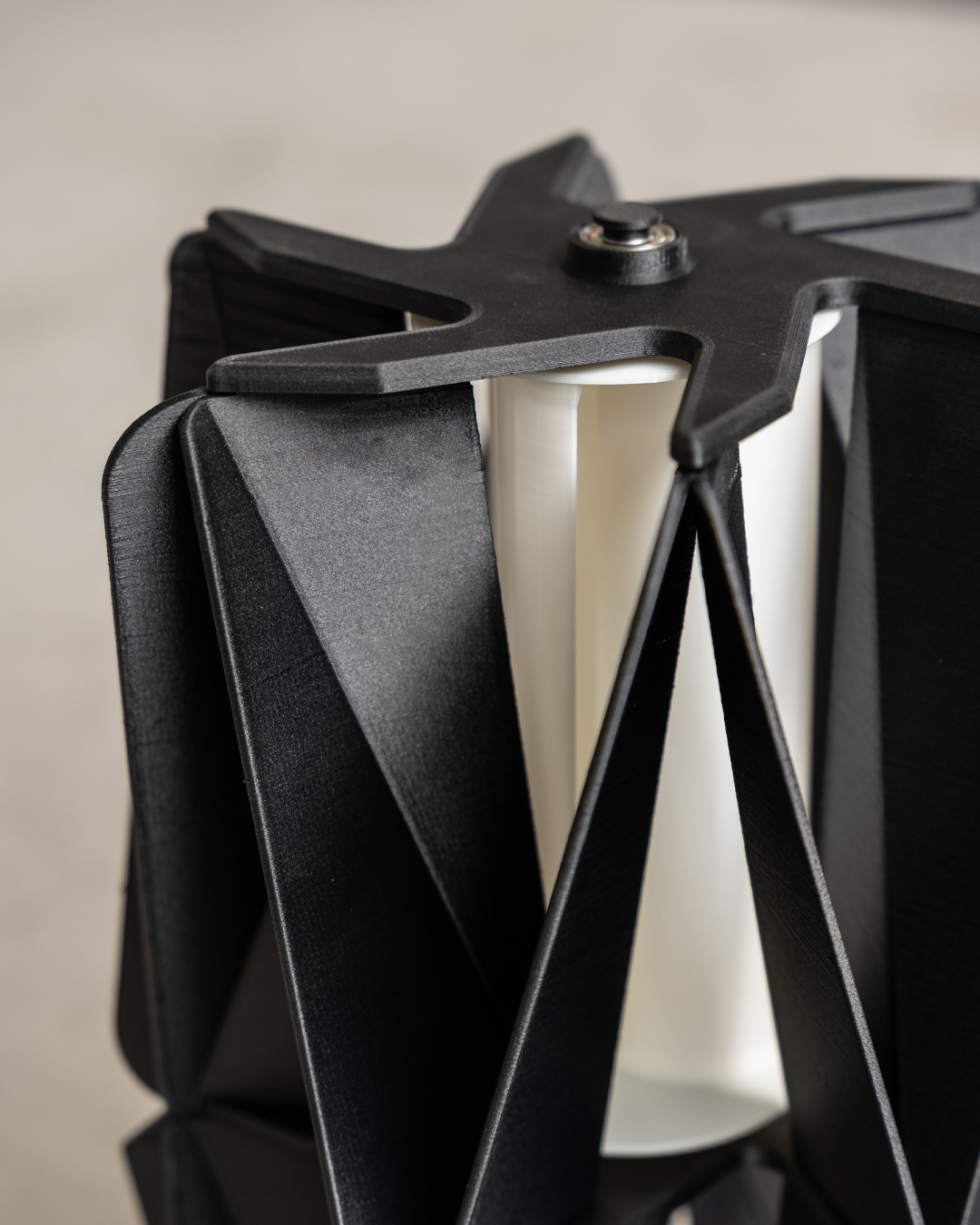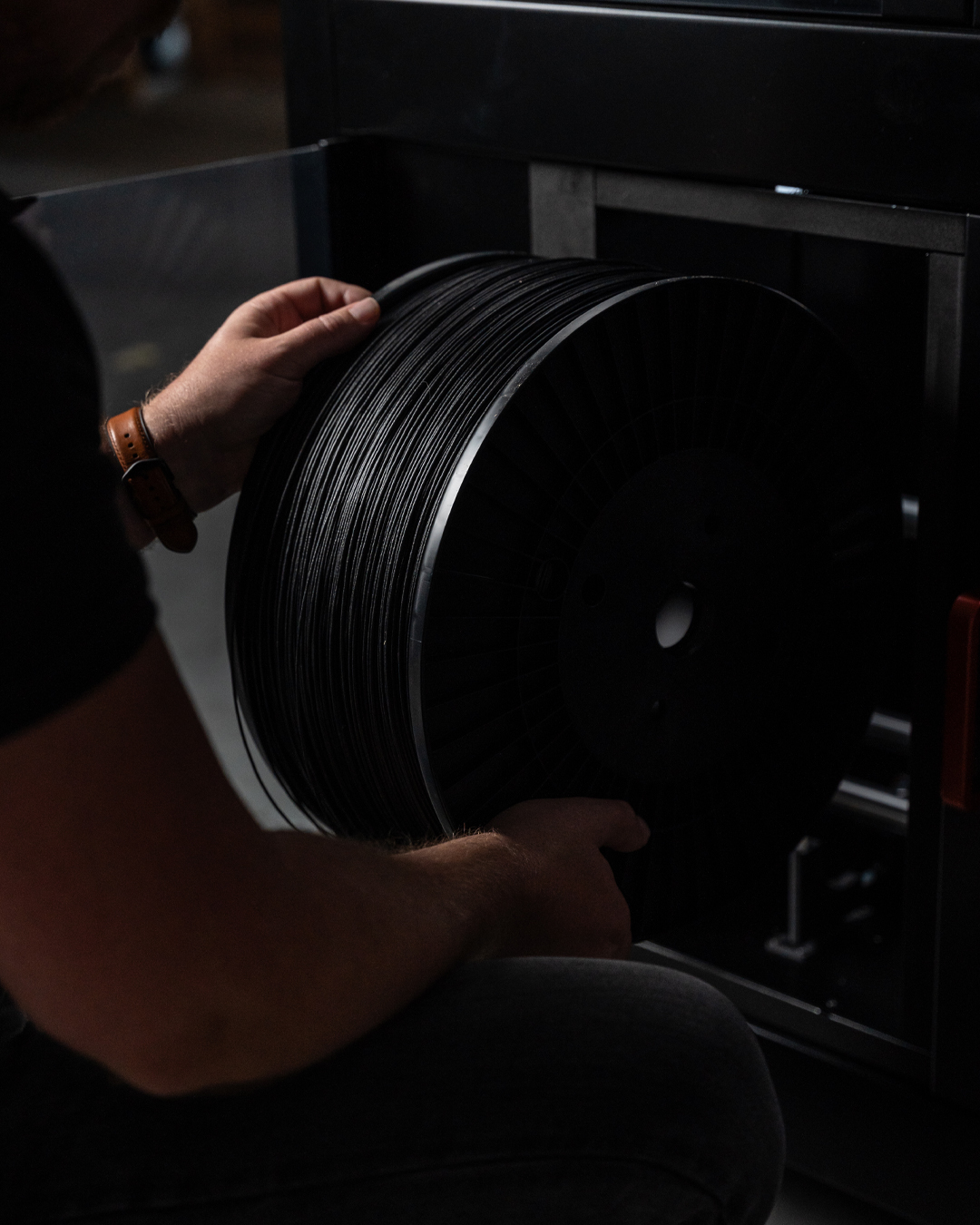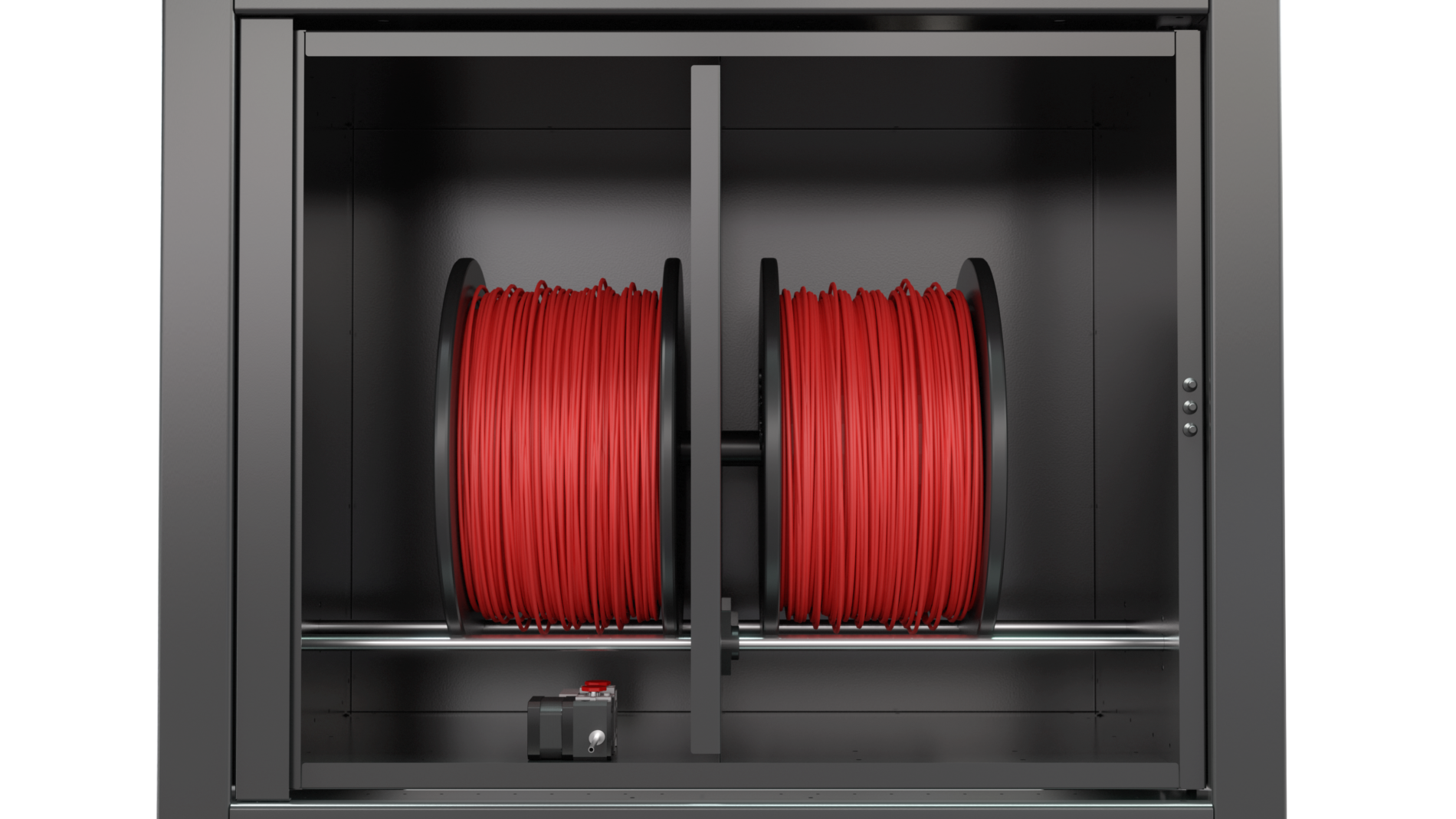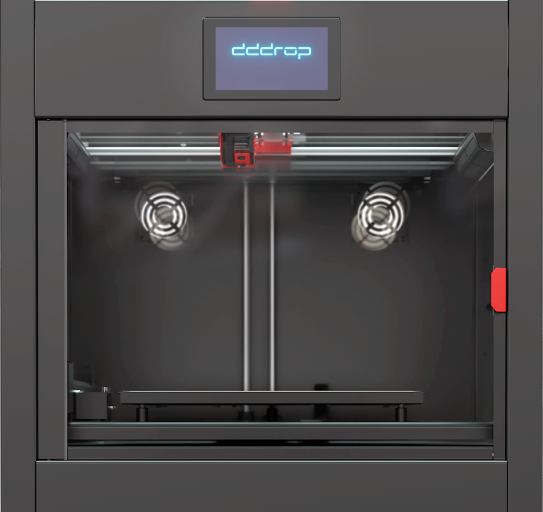Incorporating carbon fiber (CF) into filaments results in remarkable improvements in strength and stiffness. The increased strength and stiffness resulting from the addition of CF contribute to an improved strength-to-weight ratio. This performance translates into the creation of components that are not only lighter but also more resilient, all while speeding up the printing process.
Read on below to discover how carbon fiber integration can benefit your manufacturing operation and why the RAPID ONE is a suitable printer for this particular material.
Understanding carbon fiber filaments
Carbon fiber-reinforced plastics (CFRP) amalgamate the commendable traits and performance characteristics of carbon fiber with the host polymer substance they fortify. By integrating carbon fiber content, the printability and user-friendliness of conventional thermoplastics like PLA, ABS, or PET acquire heightened performance attributes.

Chopped fibers, predominantly employed in both industrial manufacturing and 3D printing, serve as the crux. These carbon fibers are introduced either as a “filler” within thermoplastic materials for injection molding or as dedicated carbon fiber filaments tailored for 3D printers. Their processing closely resembles that of any other thermoplastic substance, albeit with additional prerequisites that will be elaborated upon subsequently.
In the realm of FFF (extrusion-based) 3D printing, chopped carbon fibers take center stage. These diminutive fibers are seamlessly blended into a standard thermoplastic matrix to serve as a reinforcing element.
The significance of carbon fiber 3D printing
Within industrial settings, specific mechanical attributes and meticulous precision often take precedence. In this context, the convergence of robust material capabilities and the myriad benefits of additive manufacturing propels carbon fiber 3D printing to the forefront. This innovative approach bestows exceptional dimensional stability upon sturdy components, accentuated by a refined surface finish and elevated heat deflection temperature. These qualities render it an optimal choice for functional, high-performance applications.
As 3D printing continues its trajectory toward broader end-use production, the demand for manufacturing both components and tooling using carbon fiber filaments is on the rise.
From molds and jigs to fixtures, tooling, high-performance race cars, specialized aerospace equipment, and professional cycling gear, the utilization of carbon fiber 3D printer filament empowers the creation of components with remarkable strength. Naturally, as a relatively novel offering in the manufacturing landscape, carbon fiber 3D printing boasts numerous advantages. However, familiarizing yourself with the specific printing requisites is prudent before embarking on your journey.
Applications of CF Filaments
Carbon Fiber 3D printing finds its most promising applications within manufacturing environments, largely attributable to its impressive strength-to-weight ratio and inherent rigidity. Principally, these materials are leveraged for the production of molds, jigs, fixtures, and tooling.

Composite and thermoforming molds
In the industrial realm, the synergy between advanced 3D printing and traditional manufacturing techniques is strikingly evident in the domain of 3D printed molds. These molds amalgamate the swiftness and intricacies of 3D printing with the scalability inherent in mold-based manufacturing. Within the realms of composite molds and thermoforming molds, the performance attributes of CF materials manifest naturally.
Composite molds are pivotal for economically producing large quantities of identical components. Aptly named, they consist of composite materials that can be intricately shaped and endure repetitive utilization, all at a considerably lower cost compared to aluminum or steel molds.
Thermoforming molds employ heat and pressure to mold a flat thermoplastic sheet into a desired form, using various heating methods. Given the requirement for enduring high-temperature cycles, CF materials present an optimal choice for delivering the specific performance capabilities essential for thermoforming molds.
Jigs, fixtures and tooling
Jigs, fixtures, and tooling are often deemed supplementary to manufacturing processes, yet they hold intrinsic significance. These aids facilitate tasks such as milling, drilling, and subtractive operations. Playing a crucial role in holding components securely during various manufacturing stages, they are increasingly being 3D printed on-site. Customizability to specific requirements and the capacity for on-demand reproduction without external reliance or replenishment underscore their prominence.
When fortified with materials like CF filaments, 3D printed jigs, fixtures, and tooling exhibit prolonged durability and heightened performance. This is particularly advantageous in terms of enduring repetitive use and maintaining overall effectiveness.
Automotive and aerospace sectors
The design flexibility afforded by carbon fiber facilitates the realization of intricate geometries that conventional methods might deem cost-prohibitive. This liberty in design expedites iterative processes and, owing to augmented stiffness and thermal stability, enables the creation of more functional prototypes. Enhanced aesthetics, encompassing intricate curvature achieved through 3D printing and improved surface quality via CF filaments, fosters innovation across automotive, aerospace, and related industries.
Advantages of carbon fiber 3D printing
- High stregth
- Dimensional stability
- Light weight
- High heat deflection temperature
- Less post-processing required
- Stiffness
Undoubtedly, one of the most widely acclaimed attributes of carbon fiber 3D printer filament is its exceptional strength, which lies at the core of its performance and allure as a 3D printing medium. Carbon fiber presents a remarkable strength-to-weight ratio, fostering high-performance outcomes while maintaining minimal material density.
Through mitigating the inclination towards part shrinkage, the elevated strength and rigidity of carbon fiber substantiate its exceptional dimensional stability during utilization. This stability stands as a vital attribute for components demanding meticulous dimensions and stringent tolerances.
In tandem with its robustness, the lightweight nature of a carbon fiber 3D printer filament is of paramount significance. The inherent lightness is a central advantage in the realm of 3D printing as a whole. The incorporation of carbon fiber materials into the equation facilitates this reduction in weight without compromising the strength that meets performance standards.
When contrasted with conventional 3D printing materials such as PLA, ABS, and PETG, carbon fiber filaments exhibit notable resilience against elevated temperatures. Carbon fiber composite materials elevate the base material’s heat deflection temperature, thereby augmenting its operational efficacy under high-temperature conditions.
CF filaments effectively minimize the visibility of layer lines, resulting in superior surface quality and tactile feedback. This diminishes the necessity for subsequent post-processing tasks like sanding.
Carbon fiber parts crafted through 3D printing exhibit exceptional form retention even when subjected to significant stress. Unlike alternative materials that compromise durability and strength in pursuit of stiffness, carbon fiber’s rigidity guarantees unwavering structural integrity.
RAPID ONE: the ultimate ally for carbon fiber reinforced filaments
The rapid one 3d printer is excels at printing carbon fiber reinforced filaments. Here are some features of the rapid one that allow it to print these challenging materials with ease:
Integrated filament dryer
A crucial feature that sets the RAPID ONE apart is the integrated filament dryer. This keeps the filament in optimal state for printing at all times, without humidity that can affect the performance and finish of the final product. This contributes to consistent and high-quality results.

Closed print booth
The RAPID ONE features a closed print booth, resulting in a controlled and elevated temperature during the printing process. This minimizes problems such as warping and delamination, which is crucial when printing complex parts with carbon fiber reinforced filaments.

Tungsten nozzle
The ability to install a tungsten nozzle eliminates nozzle wear concerns with abrasive fiber-reinforced materials. The RAPID ONE is prepared for the challenges of these materials and ensures long-term durability and reliability.
Unleash the future of 3D printing
Carbon fiber-reinforced filaments represent a revolution within the 3D printing industry, and the RAPID ONE is the appropriate printer to go along with this revolution. With advanced features such as integrated filament dryer, the ability to install a tungsten nozzle and an enclosed print booth, the RAPID ONE enables users to achieve superior results with ease with these challenging materials.
Whether you are a professional looking to produce high-quality parts or a hobbyist looking to push your creative boundaries, the combination of carbon fiber reinforced filaments and the RAPID ONE 3D printer opens the door to unprecedented possibilities. Discover the power of this technology and take your 3D printing projects to a whole new level.

